
Piet Mondriaan de rode boom 19081910 Piet Mondrian Painting, Mondrian Art, Red Tree, White Tree
Piet Mondriaan (Amersfoort, 1872-New York, 1944) is een van de grondleggers van de abstracte kunst. In zijn oeuvre is de route die hij aflegt van realistische figuratie naar radicale abstractie goed te volgen. Zijn geometrisch-abstracte werk met de kenmerkende horizontale en verticale lijnen en primaire kleurvlakken is wereldberoemd.

Piet Mondriaan "Boom", 1908. Gemeentemuseum Den Haag. Picasso And Braque, Doesburg, Moving To
In the 1920s, Dutch-born artist Piet Mondrian began painting his iconic black grids populated with shifting planes of primary colors. By moving beyond references to the world around him, his.

Piet Mondriaan Blauwe boom 1909 Piet Mondrian, Mondrian Kunst, Van Gogh, Landscape Art
Evening; Red Tree (Avond; De rode boom) Artist: Piet Mondrian: Year: 1908-1910: Medium: Oil on canvas: Dimensions: 70 cm × 99 cm (28 in × 39 in) Location: Gemeentemuseum Den Haag, The Hague:. the first time at the exhibition Schilderijen en teekeningen door C. Spoor, Piet Mondriaan en Jan Sluyters in the Stedelijk Museum, Amsterdam in 1909.
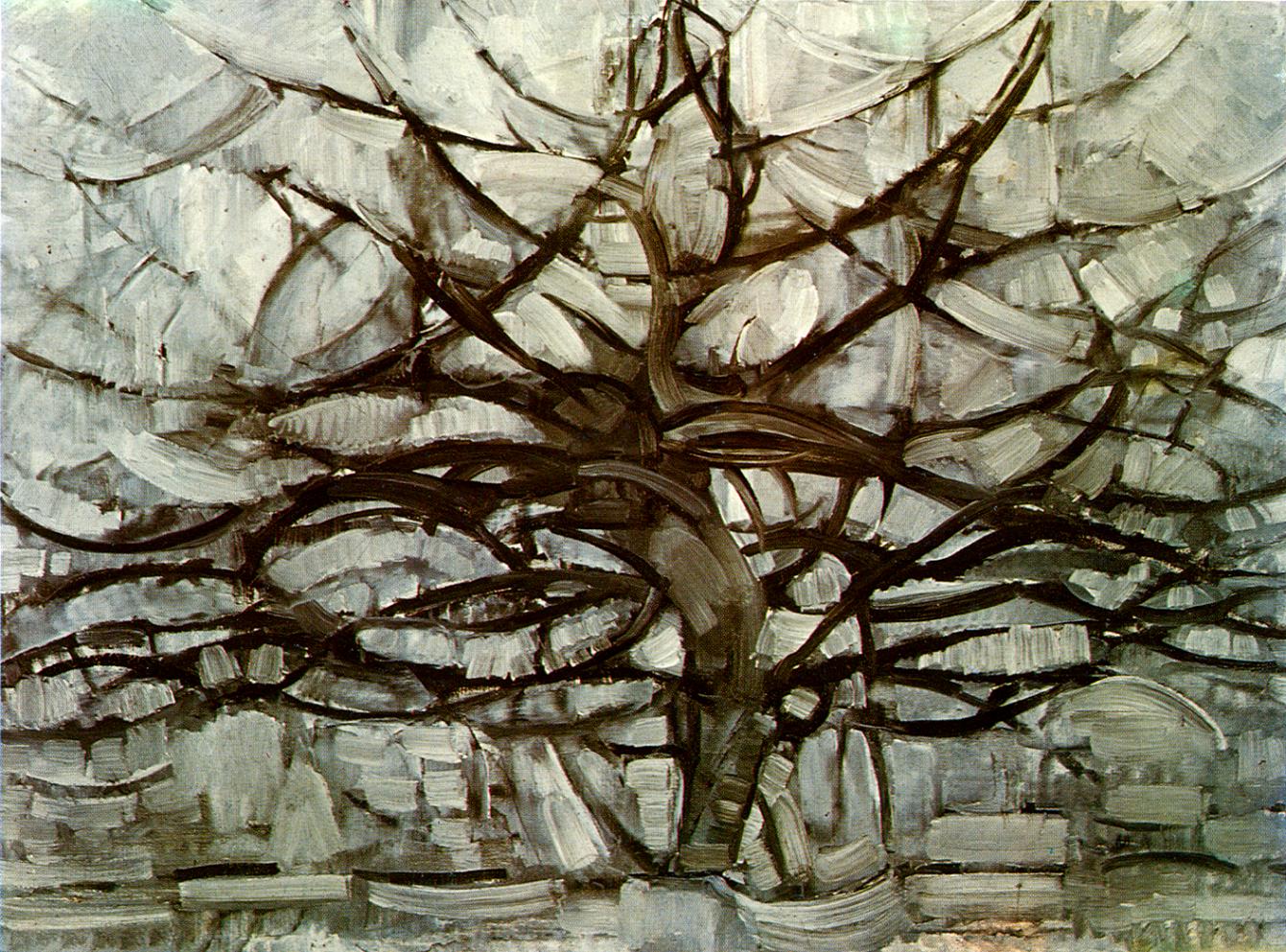
Kunstjuf Bomen van Mondriaan
Piet Mondrian is among the pioneers of abstract art and is the founder with painter Theo Van Doesburg of Neo-plasticism, also known by its original name De Stijl (in Dutch: The Style). The movement was born in the Netherlands in 1917 and was characterized by extreme formal purity. Neoplasticists realized harmonious abstract compositions based.
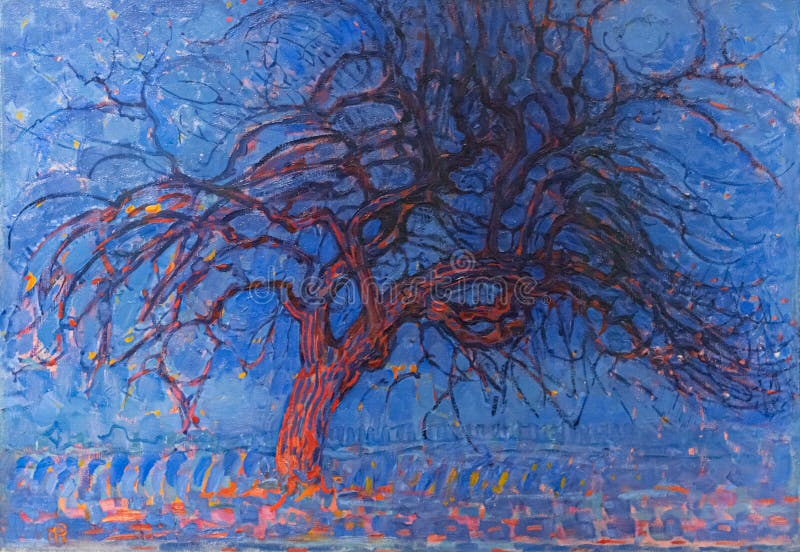
Avond Met De Rode Boom Van Piet Mondrian Stock Afbeelding Illustration of rood, samenvatting
This is an early example of the geometric mode of painting that Mondrian called Neo-Plasticism. The abstract two-dimensional nature of these compositions formed a new universal aesthetic language that was popularized through the magazine De Stijl.The avant-garde movement known by the same name held the promise of constructing a postwar world with a common point of visual reference, a way of.

Piet Mondrian Het Gein Bomen aan het water The Gein Trees along the river Circa 1905
Jump to navigation Jump to search File File history File usage on Commons File usage on other wikis Metadata No higher resolution available. Piet_Mondrian,_1911,_Gray_Tree_ (De_grijze_boom),_oil_on_canvas,_79.7_x_109.1_cm,_Gemeentemuseum_Den_Haag,_Netherlands.jpg (586 × 424 pixels, file size: 205 KB, MIME type: image/jpeg) Structured data

Kunstjuf Bomen van Mondriaan
Avond; De rode boom is een schilderij van de Nederlandse kunstschilder Piet Mondriaan uit 1908-1910, olieverf op linnen, 70 × 99 centimeter groot. Hij schildert een boom in een stijl die de overgang markeert tussen zijn vroege realistische werk en zijn latere abstracte composities. Het werk bevindt zich thans in het Kunstmuseum Den Haag.
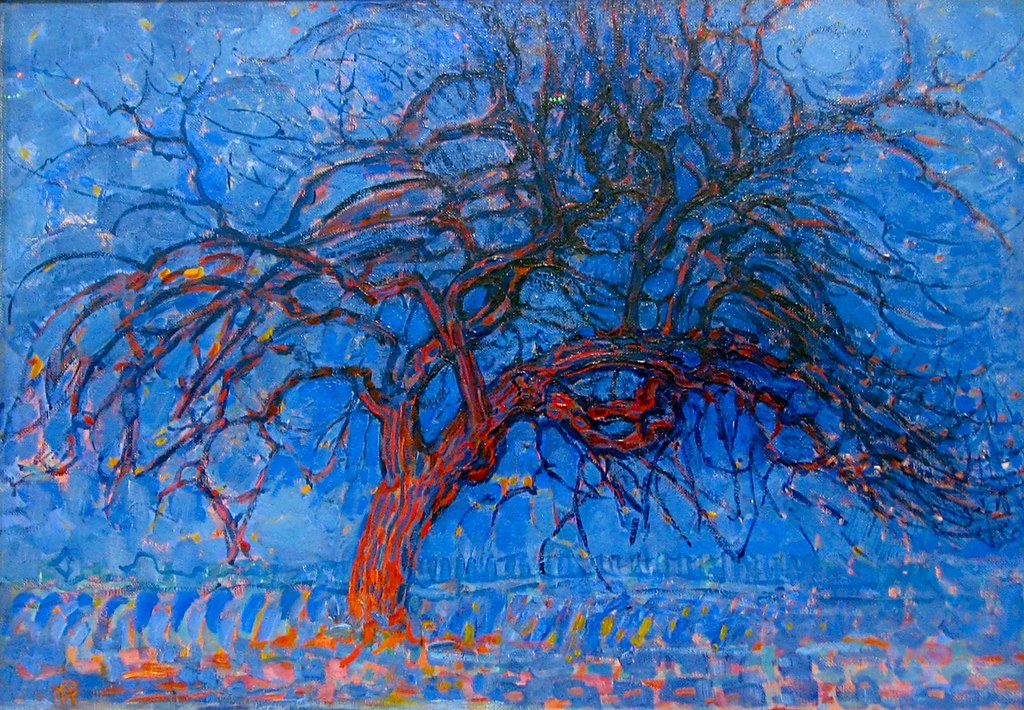
Piet Mondriaan, De Rode Boom Mondriaan & de Stijl Collecti… Flickr
Piet Mondrian, born Pieter Cornelis Mondriaan, Jr. grew up as the second of five children in a devoutly Calvinist home in central Holland. Art and music were encouraged in his household. His father, the headmaster of the local primary school, was an enthusiastic amateur artist who gave drawing lessons to his son, while Mondrian's uncle, Fritz.

Het ongekende leven van Piet Mondriaan National Geographic Nederland/België Mondriaan, Piet
Pieter Cornelis Mondriaan was born in the town of Amersfoort in the Netherlands in 1872 (he would drop the second 'a' from his surname in later life, as a way of distancing himself from his Dutch roots).. PIET MONDRIAN (1872-1944) Twee Boom Silhouetten achter een Waterloop. Piet Mondrian (1872-1944) Wilgenbos, Stammen Leunen naar Links.

Piet Mondriaan, Bloeiende appelboom 1912 Mondriaan, Piet mondriaan, Mondriaan kunst
Mondrian has experimented with his name almost as much as his artistic style. Like his forms, Mondrian reduced his name from Pieter Cornelius Mondriaan to Mondrian, distancing himself from his Dutch roots. Although still occasionally referred to as "Mondriaan," the artist officially dropped the second "a" from his name in 1911, rendering it a very appropriate anagram; "I Paint Modern."

MONDRIAAN Piet (Dutch) De grijze boom, 1911 BEGINNING OF ABSTRACT ART starting from a tree
Pieter Cornelis Mondriaan ( Dutch: [ˈpi:tər kɔrˈneːlɪs ˈmɔndrijaːn] ), after 1906 known as Piet Mondrian ( / piːt ˈmɒndriɑːn /, also US: /- ˈmɔːn -/, Dutch: [pit ˈmɔndrijɑn]; 7 March 1872 - 1 February 1944), was a Dutch painter and art theoretician who is regarded as one of the greatest artists of the 20th century.

Piet Mondriaan, Horizontale boom (1911), olieverf op canvas, 76x112 Mondrian art, Piet
March 5, 2021 5:50pm. Public Domain. Inside his final studio, on East 59th street in New York, Dutch painter Piet Mondrian covered each wall with painted papers cut into crisp rectangles. Mondrian.
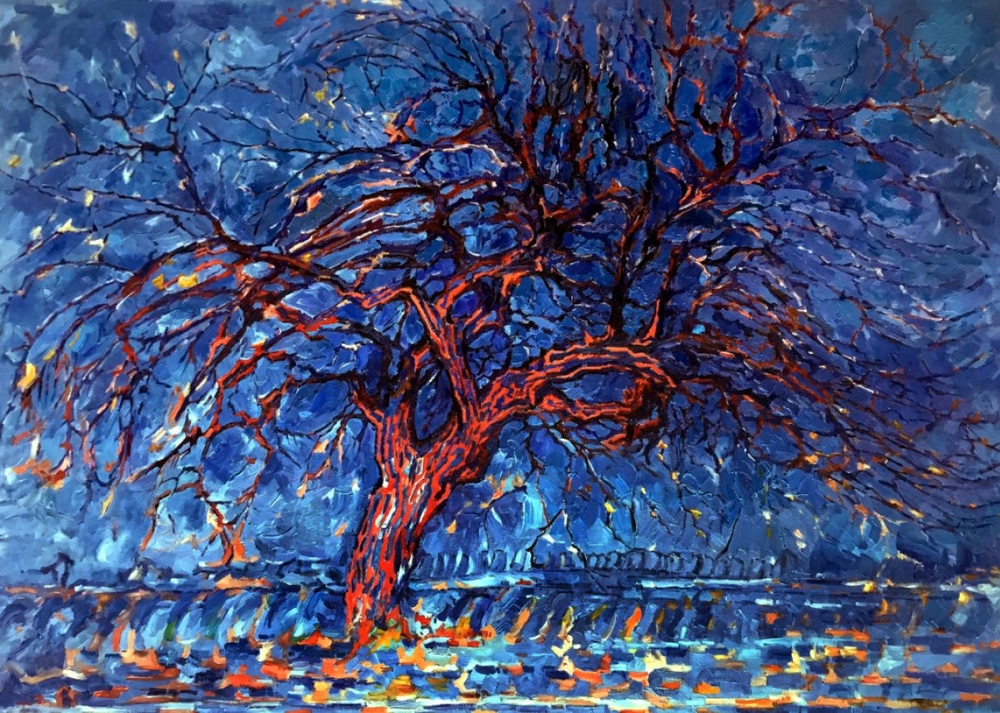
De Rode Boom Mondriaan reproductie Van Gogh Studio
Piet Mondriaan (Amersfoort, 1872-New York, 1944) is een pionier van de abstracte kunst. Zijn oeuvre is getuige van de weg die hij aflegt van figuratie naar abstractie. Vooral zijn latere geometrisch-abstracte werk met de kenmerkende horizontale en verticale lijnen en primaire kleurvlakken is wereldberoemd.
.jpg)
Boom A von Piet Mondrian Hochwertigste Kunstreproduktion
Wikipedia entry Getty record Associated art terms include Abstraction, de Stijl, and Neo-Plasticism. Works 30 works online Piet Mondrian Reformed Church at Winterswijk 1898 Piet Mondrian Truncated View of the Broekzijder Mill on the Gein, Wings Facing West c. 1902-03 or earlier Piet Mondrian Chrysanthemum (recto) and Head in Profile (verso) 1906

De rode boom Piet Mondriaan
File:Piet Mondrian, 1911, Gray Tree (De grijze boom), oil on canvas, 79.7 x 109.1 cm, Gemeentemuseum Den Haag, Netherlands.jpg Uncropped, accurate colors and tones, lower resolution, Gemeentemuseum version
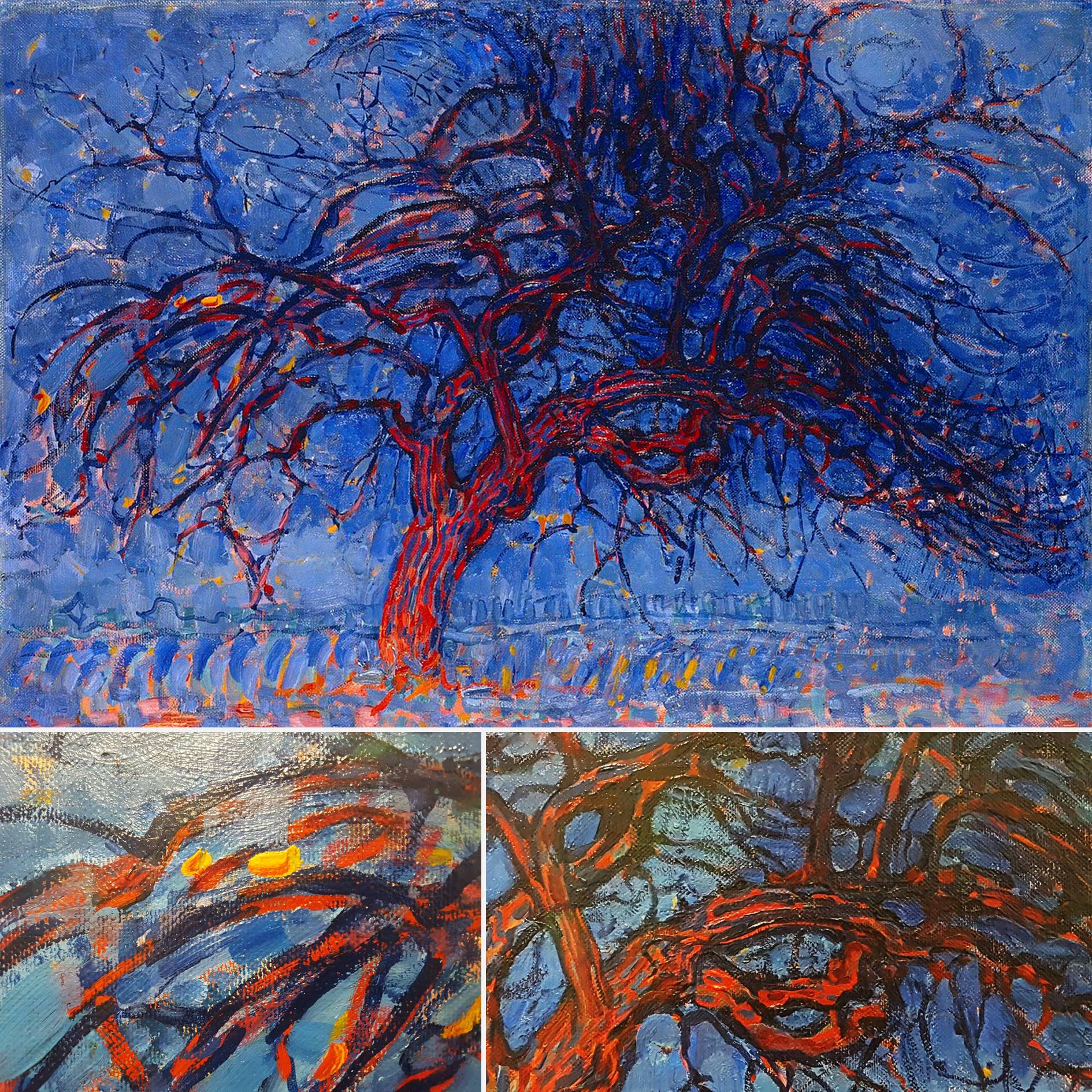
robertdouw.nl
Avond (Evening): The Red Tree, one of the most important in Mondrian s series on the tree theme, was done in the same year as the Windmill in Sunlight. In its color range and brushwork, and above all in its conception of nature, it shows many points of contact with that other picture. Here too there seems to be a definite influence of Vincent.